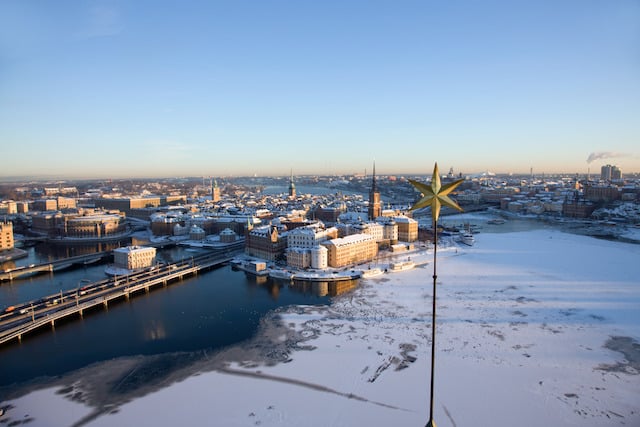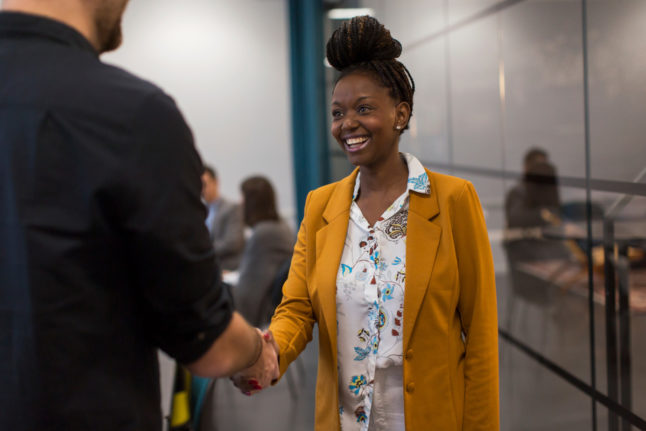Stockholm’s three main universities are working independently and collaboratively to improve the wellbeing of both people and the planet. Between them, Stockholm University, KTH Royal Institute of Technology and Karolinska Institutet are tackling issues like climate change, chronic pain and age-related diseases as well as shedding light on the universe as we know it.
Here are six incredible studies to recently come out of Stockholm.
Electrifying the future

Is it possible to create an electrical system that contributes to a more sustainable society? What do we need to do to electrify our roads? These are some of the questions that were asked at KTH’s seminar ‘Electrified mobility – the path to a fossil-free society’ and that are an everyday focus for Lina Bertling Tjernberg, professor of power grid technology at KTH.
Technologies like AI and machine learning combined with access to smart grids and solar and wind power are paving the way for a fossil-free society. The challenges, however, revolve around infrastructure, flexibility and how best to convert, transfer and store energy. Tjernberg’s current research aims to develop cost-effective methods for the modernisation of the electric power system, also known as the Smart Grid, as well as working out how to reduce the loss of electricity between generation and usage.
“There’s plenty we can solve using new methods and access to data. It’s going incredibly fast and electrification is a huge trend at the moment,” says Tjernberg.
Cutting consumption

Back in 2015, the UN published its 2030 Agenda for Sustainable Development outlining 17 goals which must be urgently addressed by all United Nations Member States. Among them was the need to ensure sustainable consumption and production to promote resource and energy efficiency, sustainable infrastructure and a generally greener, better quality of life for everybody.
But how to go about changing the habits of a lifetime?
KTH’s new research programme ‘Mistra Sustainable Consumption’ aims to give more knowledge about what sustainable consumption is and design a roadmap for the general public to make more sustainable everyday choices. The programme will explore ways in which policy makers, businesses, civil society organisations and consumers can find practical solutions to bring about a shift in behaviour.
Treating chronic pain

Pain may be unpleasant but it’s necessary for survival. It helps us to avoid hurting ourselves further as well as telling us when we need to rest and heal. Some people are unfortunate enough to suffer from chronic pain disorders which doctors struggle to diagnose or effectively treat.
Now researchers at Karolinska Institutet have discovered a new sensory receptor organ that could offer fresh insight into why we feel pain. The organ is made up of octopus-like shaped glial cells which combine to form a mesh-like organ within the skin. The breakthrough moment came when researchers used optogenetics – the use of genetic engineering and optics to selectively monitor or control nerve cell activity – to discover the organ is sensitive to environmental irritation, like pricks and impacts. The findings could be key to developing new pain-relieving drugs to treat chronic pain disorders.
Click here to find out more about innovation in Stockholm
“The discovery changes our understanding of the cellular mechanisms of physical sensation and it may be of significance in the understanding of chronic pain,” says Patrik Ernfors, professors at Karolinska Institutet and chief investigator of the study.
Turning back time

Ageing is a natural phenomenon and there is, sadly, nothing we can do about it. But we can try to understand the ageing process better in order to explain – and prevent – certain age-related diseases. There may also be a way to reverse our ‘biological age’, i.e. how old our cells are as opposed to the number of birthdays we’ve celebrated.
That’s the goal for Sara Hägg, senior researcher at Karolinska Institutet. Using samples from the Swedish Twin Registry (STR), a registry managed by KI with the information of around 85,000 twin pairs, the Genomics Aggregation Project in Sweden (GAPS), and the UK Biobank, Sara is investigating how different ‘biological age’ predictors can explain common health conditions associated with ageing. She is also exploring the use of geroprotectors – substances that support healthy ageing or that extend healthy life – to find out if it’s possible to turn back the clock on cell changes and reverse our biological age.
It might be time to rewrite the old maxim ‘you’re only as old as you feel’ to ‘you’re only as old as your cells’!
Click here to find out about life sciences in Stockholm
Hearing dark matter

Dark matter makes up around 85 percent of the universe yet scientists are unable to directly observe it. The elusive substance – which researchers believe may be theoretical particles known as ‘axions’ – emits neither light nor energy and only makes itself known through weak interactions with regular matter.
“Finding the axion is a bit like tuning a radio: you have to tune your antenna until you pick up the right frequency. Rather than music, experimentalists would be rewarded with ‘hearing’ the dark matter that the earth is travelling through,” explains Dr. Alexander Millar, researcher at Stockholm University’s Department of Physics.
Dr. Millar and his physicist colleagues are using plasma, a material where electrons can flow freely, to ‘hear’ the dark matter. Within a magnetic field, the axions generate a small electric field that drives oscillations into the plasma and amplifies the signal resulting in an ‘axion radio’. The plasma creates an environment where the dark matter can be heard more easily at the same time making it possible to collect the energy of the converted dark matter. By building this ‘tuneable’ plasma, researchers can search for axions within the plasma’s haloscope. In layman’s terms, it means scientists are one step closer to solving the mystery of dark matter.
“The fact that the experimental community has latched onto this idea so quickly is very exciting and promising for building a full-scale experiment,” says Dr. Millar.

At Stockholm University, Aji Mathew and her research team are improving a nanocellulose membrane and 3D-printed filters which have unique properties for purifying industrial water waste.
The membrane – which has many pores that are invisible to the naked eye but which can be modified during manufacturing – makes it possible to separate a higher proportion of metals from the water. Both the captured metals and membrane material can be recovered or recycled, allowing for the upcycling of natural resources.
“We have had very good results in testing the nanocellulose filters at industries from southern Europe and we aim to use it for the mining industry in Sweden,” says Aji Mathew.
Mathew, who has been working with nanocellulose for two decades, hopes that 3D-printed nanocellulose implants will one day be used to assist in regenerating damaged body parts.
“In one of our projects, we try to modify the mechanical properties and pore structures of nanocellulose-based materials to mimic body tissue as much as possible. 3D-printed nanocellulose implants give unlimited possibilities in this aspect.”
This article was produced by The Local Creative Studio in partnership with Invest Stockholm.



 Please whitelist us to continue reading.
Please whitelist us to continue reading.